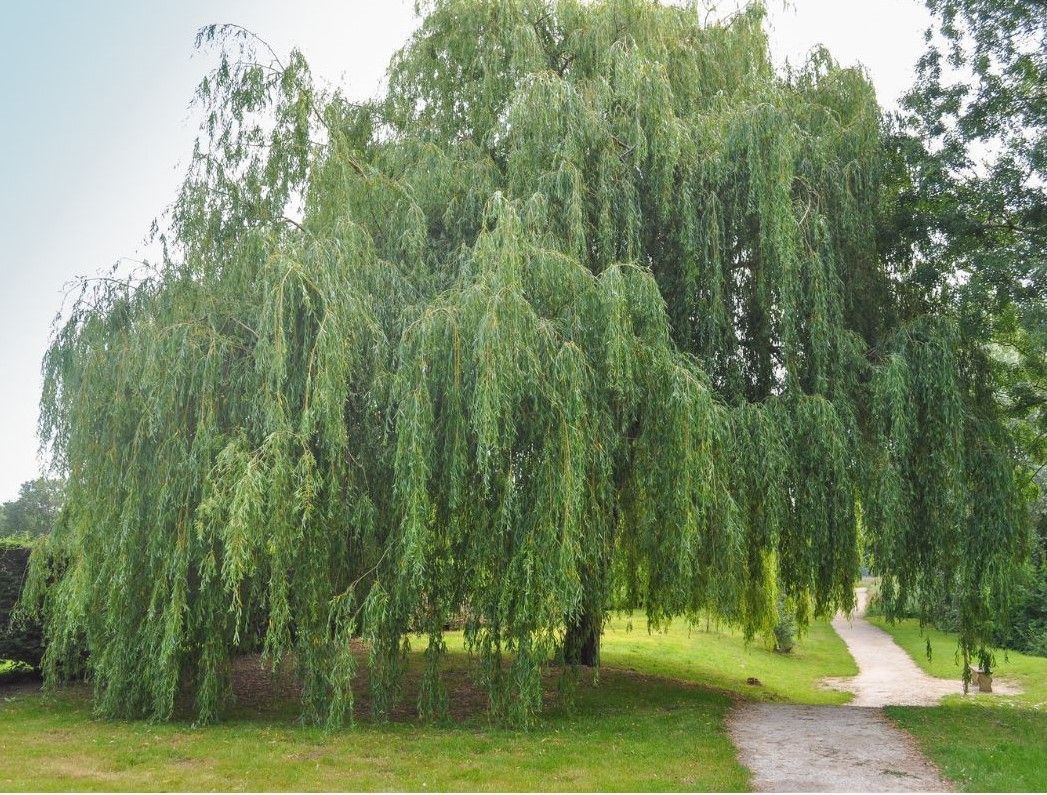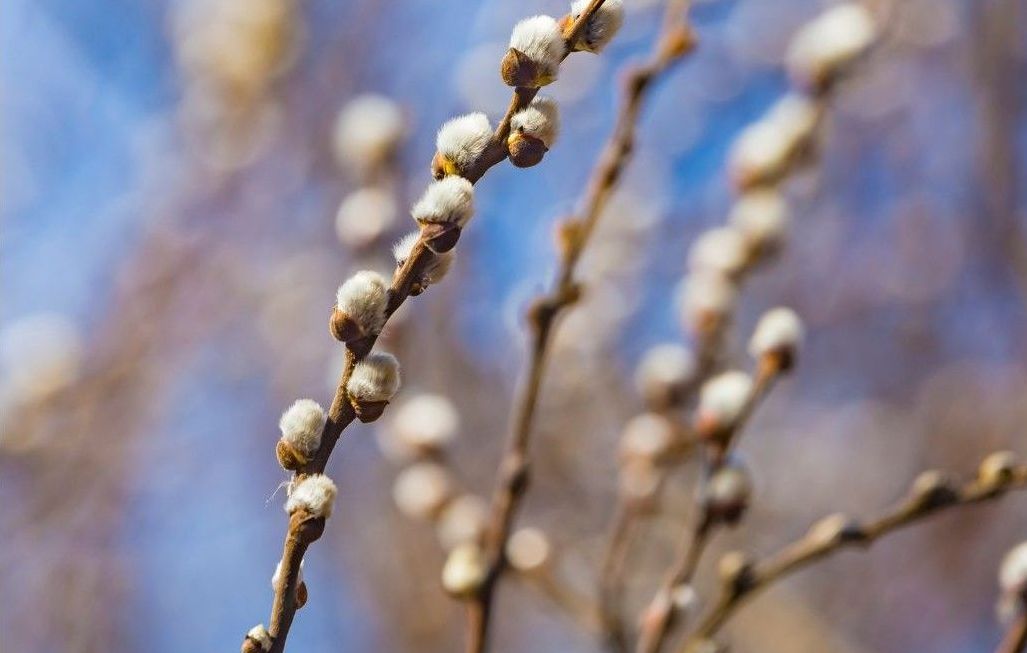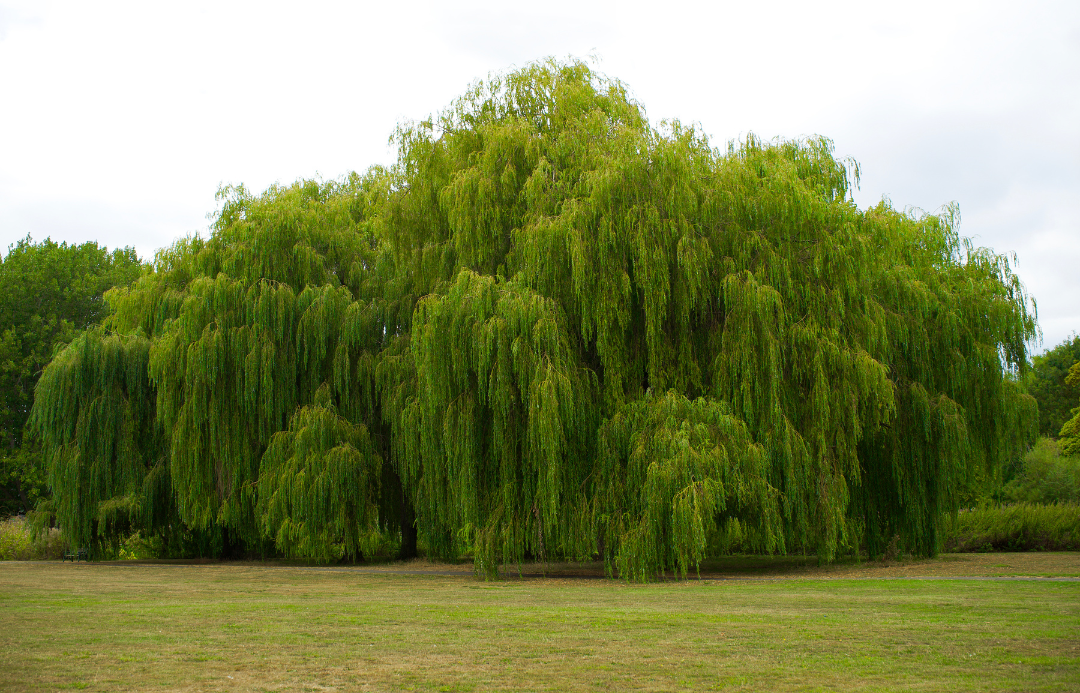Which Willow is Right for You?
The willow tree (Salix spp.) is one of the most recognizable and beloved trees worldwide, known for its graceful, flowing branches and rapid growth. Willows thrive in temperate regions and are commonly found near water sources like rivers, lakes, and wetlands due to their high-water demand. Their characteristic drooping branches create a peaceful, almost dreamlike landscape, making them a popular choice for ornamental purposes in gardens and parks.
There are several species within the Salix family, each with its own unique characteristics, uses, and quirks. For example, the weeping willow (Salix babylonica) is iconic for its cascading branches, while the white willow (Salix alba) is often used for medicinal purposes due to the natural salicylic acid found in its bark, which is a precursor to aspirin. This diversity makes the willow tree not only beautiful but also highly versatile and significant in both natural and human contexts. In this article, we will briefly review each of the willow species to help you determine which one is right for you.
1. Weeping Willow (Salix babyloncia)

Weeping willow is one of the most iconic and graceful trees, known for its elegant, drooping branches and widespread presence in ornamental gardens and landscapes. These trees are often featured in literature, poetry, and art due to their melancholic appearance, symbolizing both beauty and sorrow. Some popular varieties include the golden weeping willow, which has bright yellow branches and a more pronounced weeping form, and the corkscrew willow, known for its twisted branches and striking appearance.
Weeping willows are known for their rapid growth, often growing several feet per year under ideal conditions. They thrive in moist, well-drained soils and are often planted near water sources to help with soil stabilization and erosion control. They prefer full sun but will also do well in partial shade. Weeping willows prefer loamy, slightly acidic soil but are highly adaptable and can tolerate a variety of soil types, including clay and sandy soils.
This species grows to 30 to 50 feet (9-15 meters) tall but can reach up to 70 feet in some cases. They have an expansive spread of up to 50 feet, giving them a broad and open canopy. Long, narrow, and lance-shaped, weeping willow leaves are light green during the growing season, turning to a beautiful golden yellow in the fall. The thin, flexible branches droop toward the ground, creating a cascading, weeping appearance that gives the tree its name. The bark is rough and grayish-brown, developing deep furrows and ridges with age.
Weeping willows contribute to the overall ecosystem as well. They provide shelter for various birds, insects, and small mammals. Birds often nest in its branches, while bees and other pollinators are attracted to its flowers. Weeping willows produce catkins that are an early source of pollen and nectar for bees in the spring, making them an important part of the spring resurgence of life.
Some things to consider:
- Weeping willows tend to have a relatively short lifespan of about 30-50 years, compared to other longer-living tree species.
- The wood of the weeping willow is soft and brittle, making it susceptible to breakage during storms or strong winds. Regular pruning is often necessary to remove weak or damaged branches.
- Due to their aggressive root systems, they should be planted away from homes, sidewalks, and sewer lines to avoid potential damage.
- Weeping willows are prone to a variety of pests and diseases, including aphids, caterpillars, and fungal infections such as cankers and blight.
2. Pussy Willow (Salix discolor)

The velvety texture of the pussy willow catkins is this species' most defining characteristic. These "furry" buds are not only visually attractive but also soft to the touch, making them popular in tactile, ornamental displays. The name "pussy willow" comes from the resemblance of the catkins to the soft, furry paws of a cat, which is why this tree is often associated with a sense of warmth and comfort. Popular varieties include the dwarf pussy willow, perfect for smaller gardens or containers, and the goat willow, which often has a more upright growth habit.
Pussy willows are fast-growing and can quickly establish themselves in a garden or natural setting. They thrive in moist, well-drained soils and are often found near water sources like ponds, streams, and wetlands. Full sun to partial shade is ideal for this plant’s growth. They prefer slightly acidic to neutral soil but can adapt to various soil conditions, as long as it's not too dry. Pussy willows benefit from regular pruning to maintain their shape and encourage healthy growth. Pruning should be done after flowering.
The Pussy Willow can grow between 15 to 25 feet (4.5 to 7.5 meters) tall but is often kept smaller in garden settings. It typically has a spread of about 12 to 15 feet. The leaves are lance-shaped, green on top, and paler underneath. In the fall, they turn a golden yellow before dropping. Smooth and flexible, the branches support the distinct, furry catkins that the tree is famous for. Pussy willows are dioecious, meaning that male and female flowers grow on separate plants. Male trees often sport showier catkins and are the ones typically recognized as "pussy willows." They turn yellow when the pollen is ready. Female trees produce smaller and less conspicuous catkins, appearing after the male catkins have bloomed.
The pussy willow's catkins often appear while snow is still on the ground, signaling the end of winter. The early emergence of catkins makes pussy willows one of the first plants to provide pollen and nectar to bees and other pollinators in the spring. Other birds, insects, and small mammals find refuge in the branches, and use the debris as nesting materials and shelter during the winter months.
Some things to consider:
- Pussy willows can be prone to aphids, caterpillars, and willow leaf beetles. They can also suffer from fungal diseases such as cankers and leaf spot.
- Like other willow species, they have a strong and extensive root system that can seek out water sources. It’s best to plant them away from underground pipes and structures to prevent root invasion.
3. White Willow (Salix alba)

The white willow is a distinctive and versatile species within the willow family, recognized for its silvery foliage and impressive size. This species is native to Europe and western Asia but has been widely cultivated in temperate regions around the world, primarily for its practical uses and ecological benefits.
White willows are fast-growing trees that can reach heights of 50 to 80 feet (15-24 meters), with a broad, spreading canopy. Their narrow, lance-shaped leaves have a whitish underside, giving the tree its name and adding a shimmering quality when the wind rustles through the branches. The bark of the white willow is thick, furrowed, and grayish-brown, developing a rugged texture with age. The tree’s flowers are small and form catkins in the spring, serving as an early food source for pollinators.
Ecologically, white willows play an important role in riparian habitats, where their extensive root systems help prevent soil erosion and maintain bank stability along waterways. The roots are particularly effective at absorbing excess water, making the tree an excellent choice for areas prone to flooding or high soil moisture. Their ability to support local wildlife is also significant; white willows provide habitat and food for a range of bird species, small mammals, and insects, making them a valuable asset to biodiversity.
In addition to their ecological contributions, white willows have a long history of medicinal use. The bark of the white willow contains salicin, a compound that has pain-relieving and anti-inflammatory properties and is often considered a natural precursor to aspirin. For centuries, white willow bark was used to treat various ailments, such as headaches, fever, and muscle pain, and it remains popular today in herbal medicine.
Some things to consider:
- Their wood, while lightweight, is relatively weak and prone to breakage, especially in strong winds or heavy storms. Regular pruning is often necessary to maintain the tree's health and structure, as well as to prevent branches from becoming a hazard.
- Additionally, white willows have an aggressive root system, which means they should be planted at a safe distance from buildings, sidewalks, and underground utilities to avoid damage.
References:
Images - Canva
Check out the latest:









